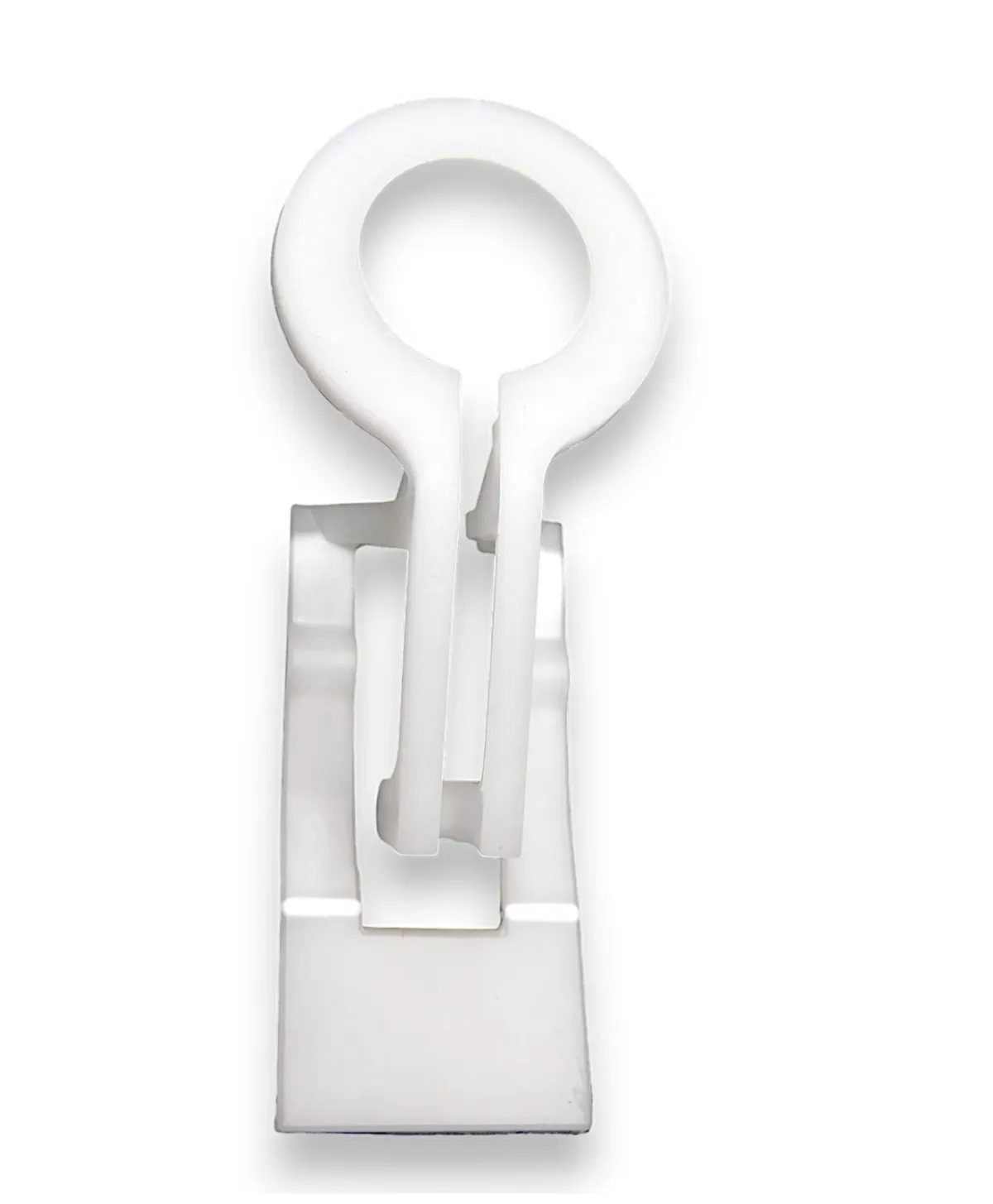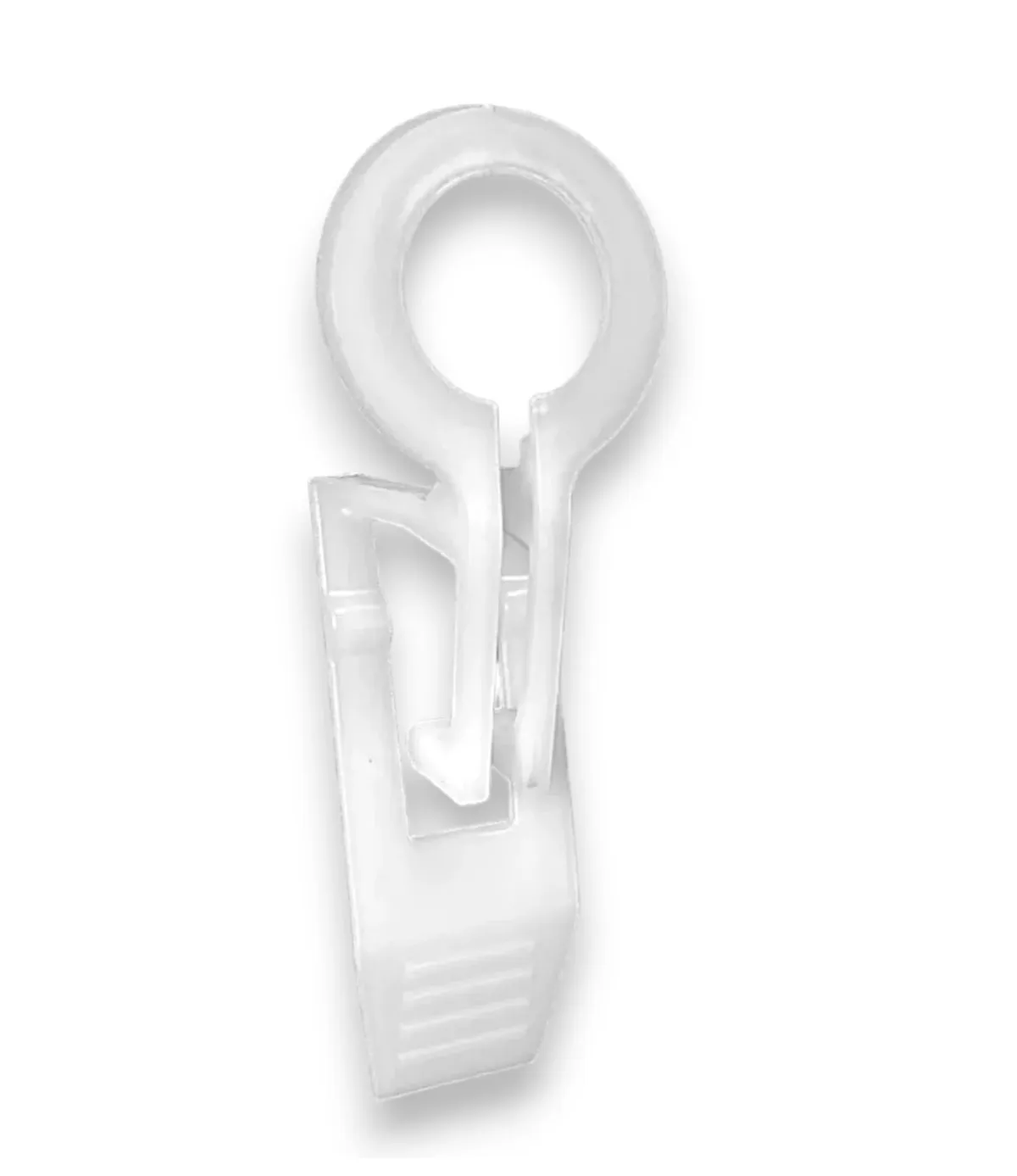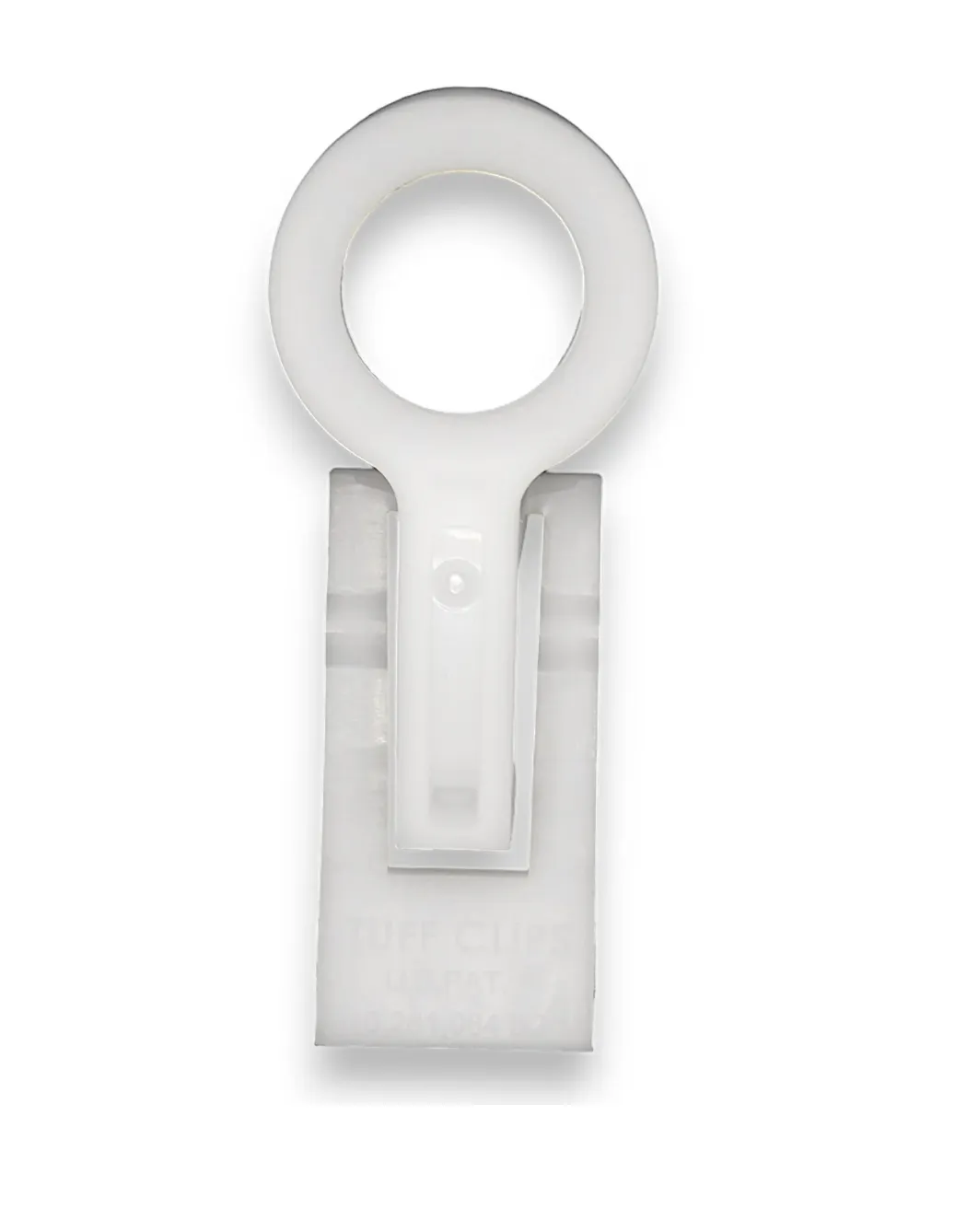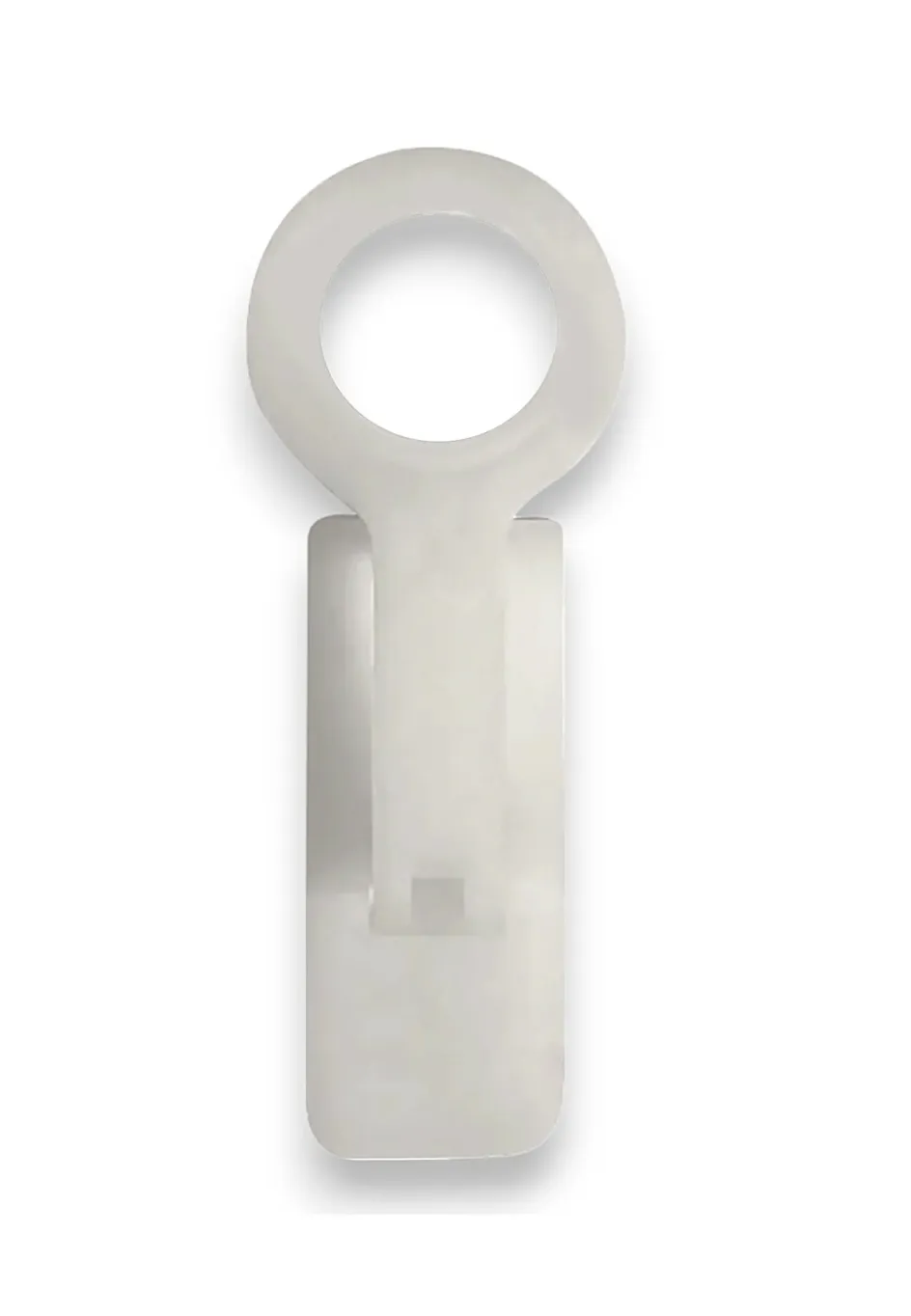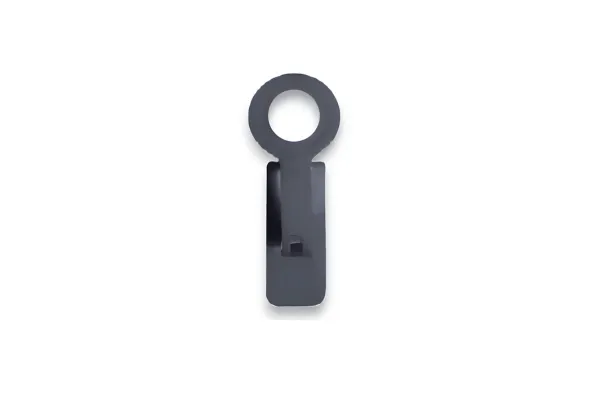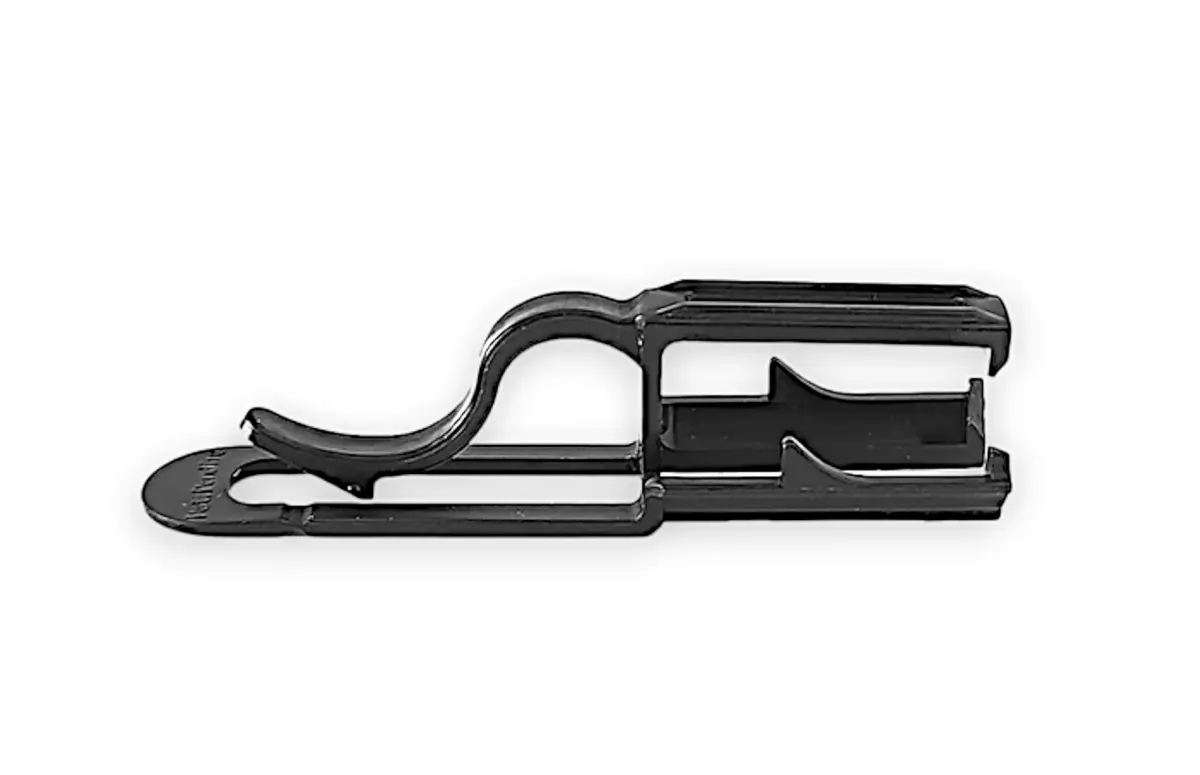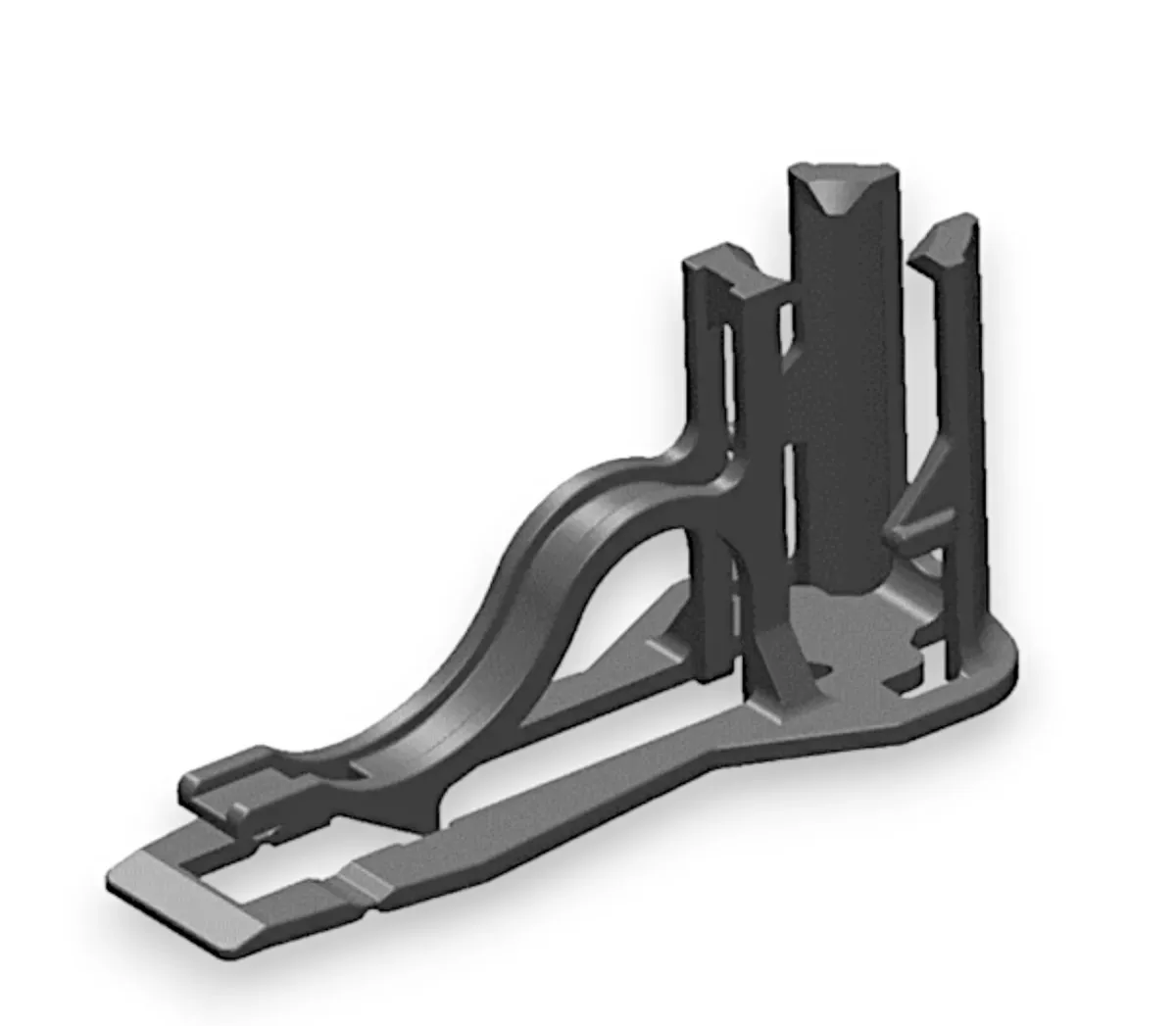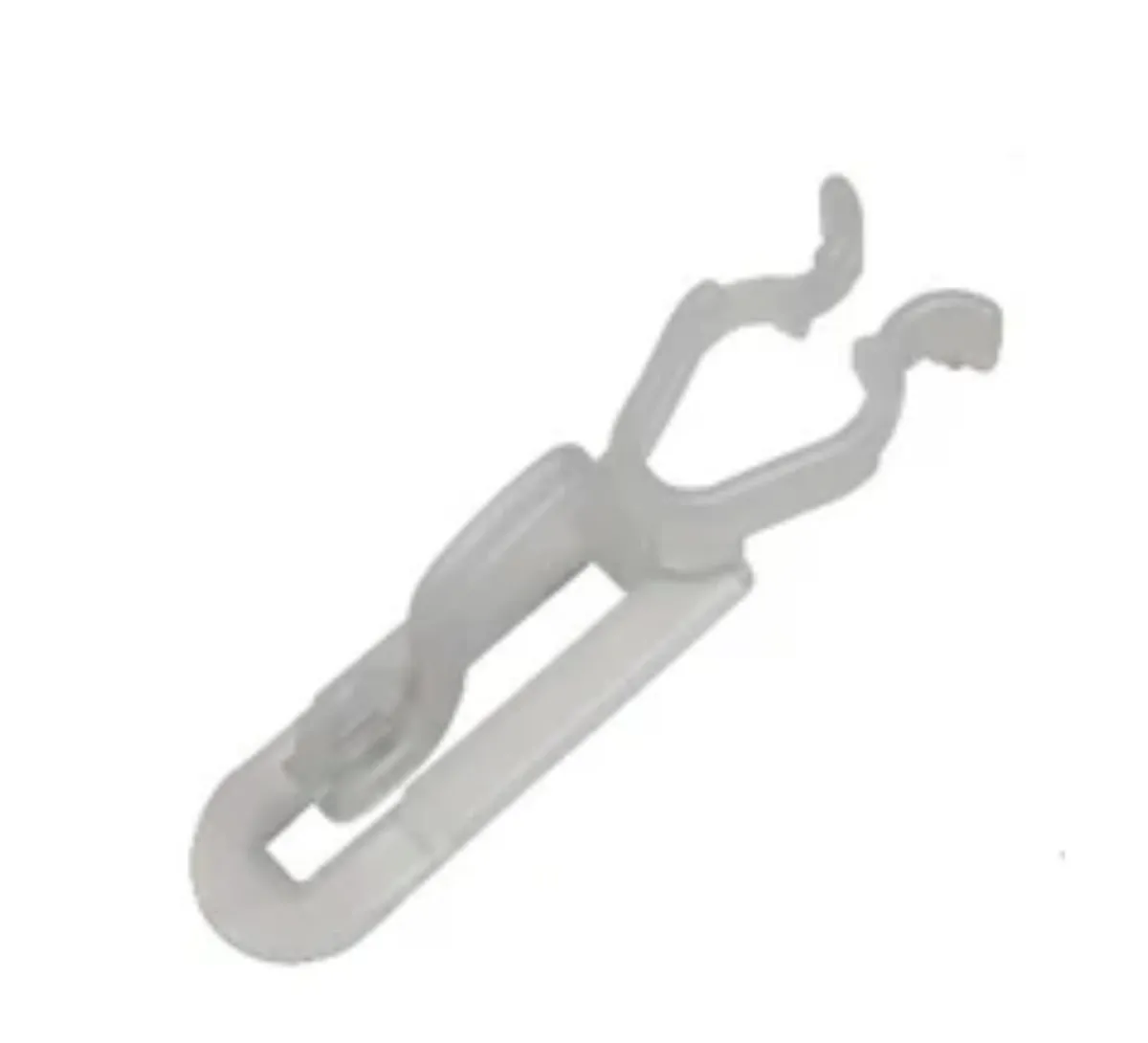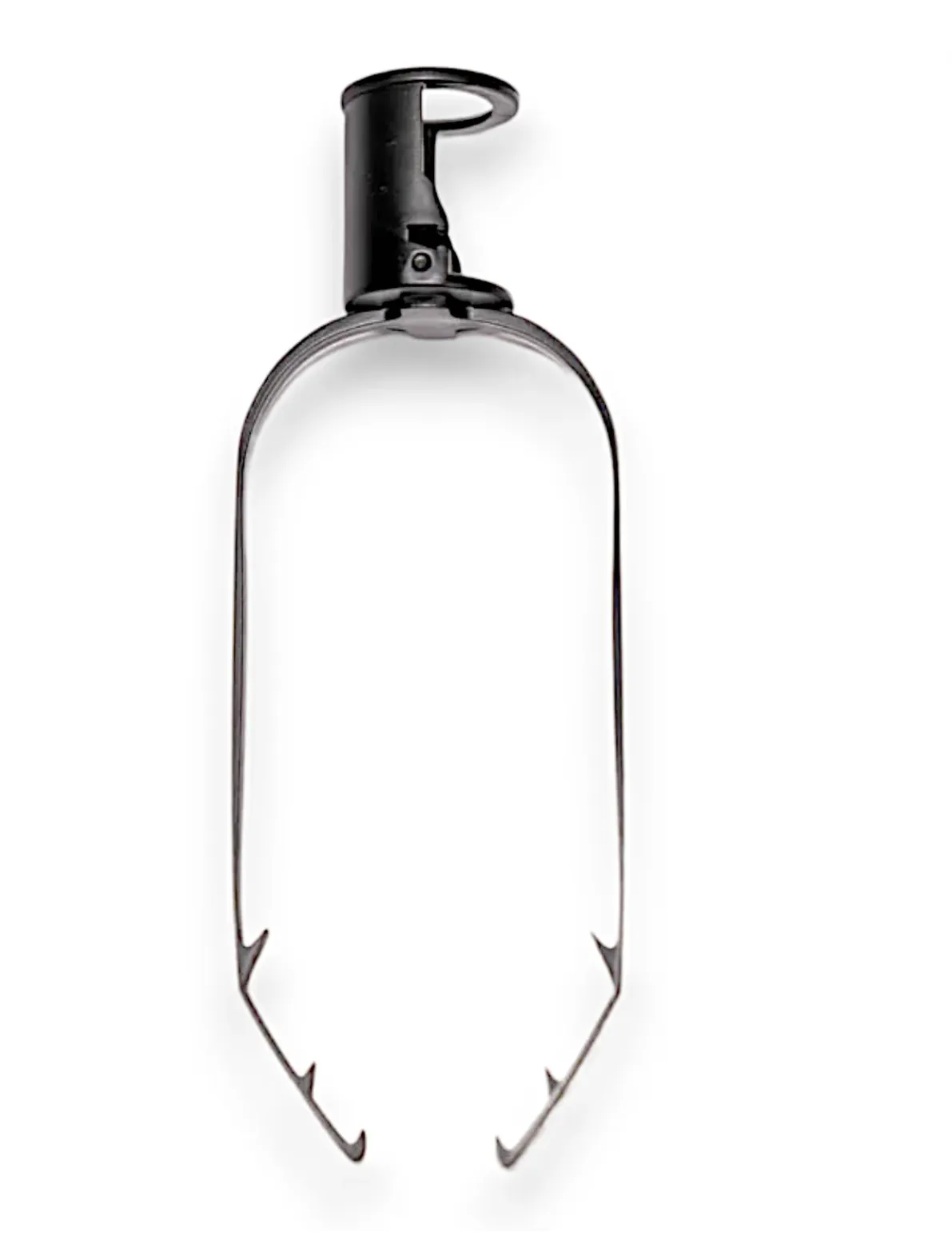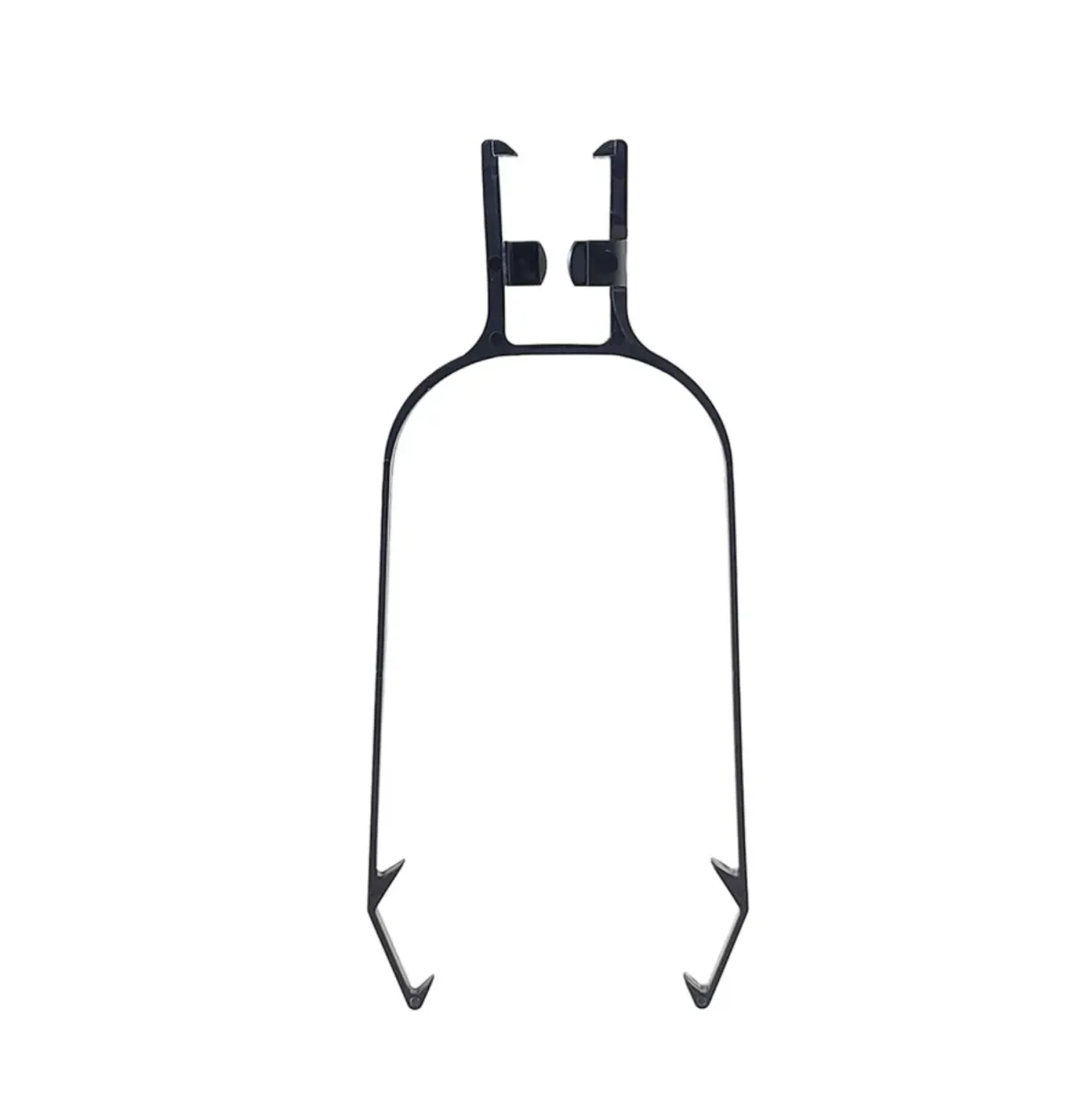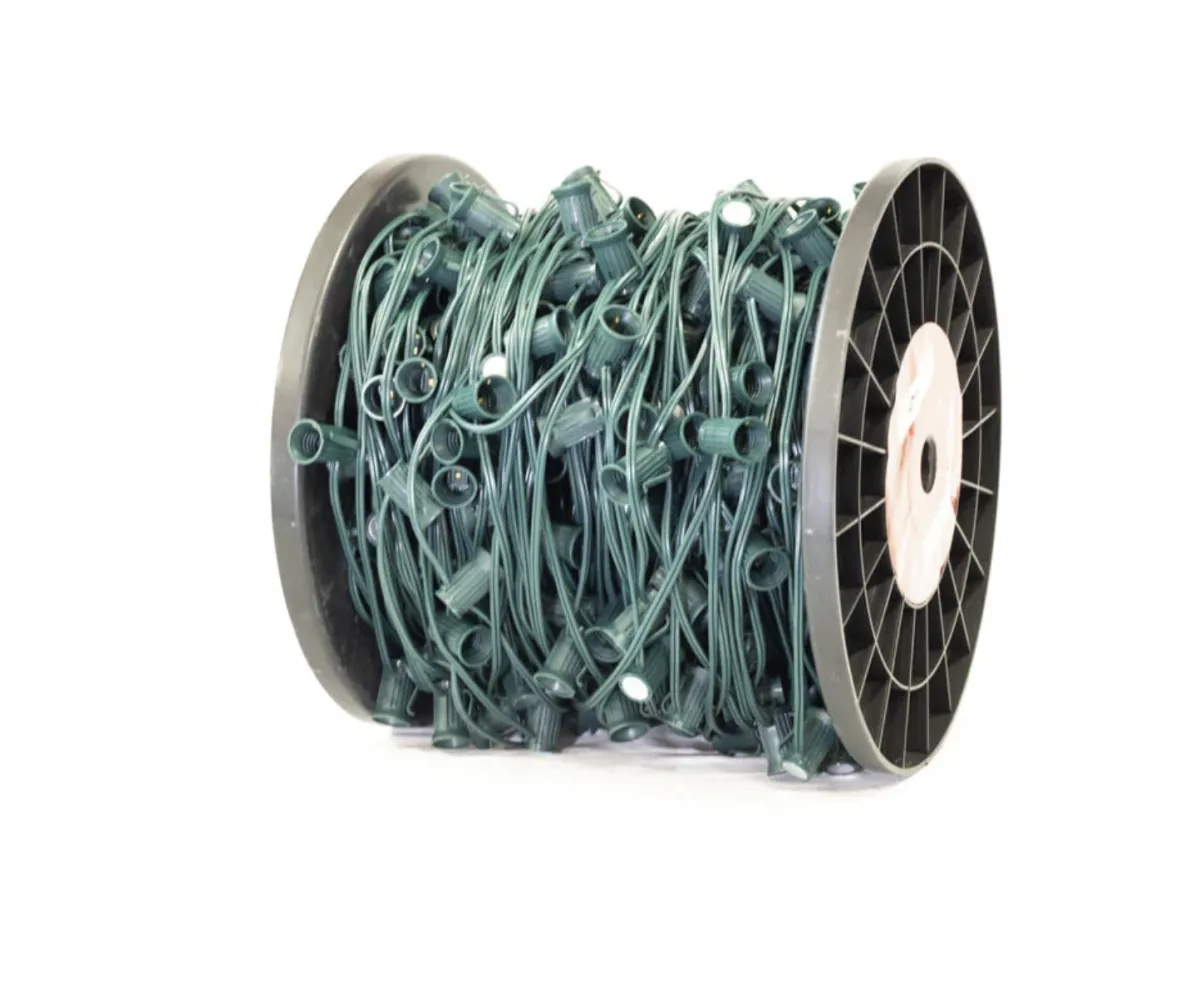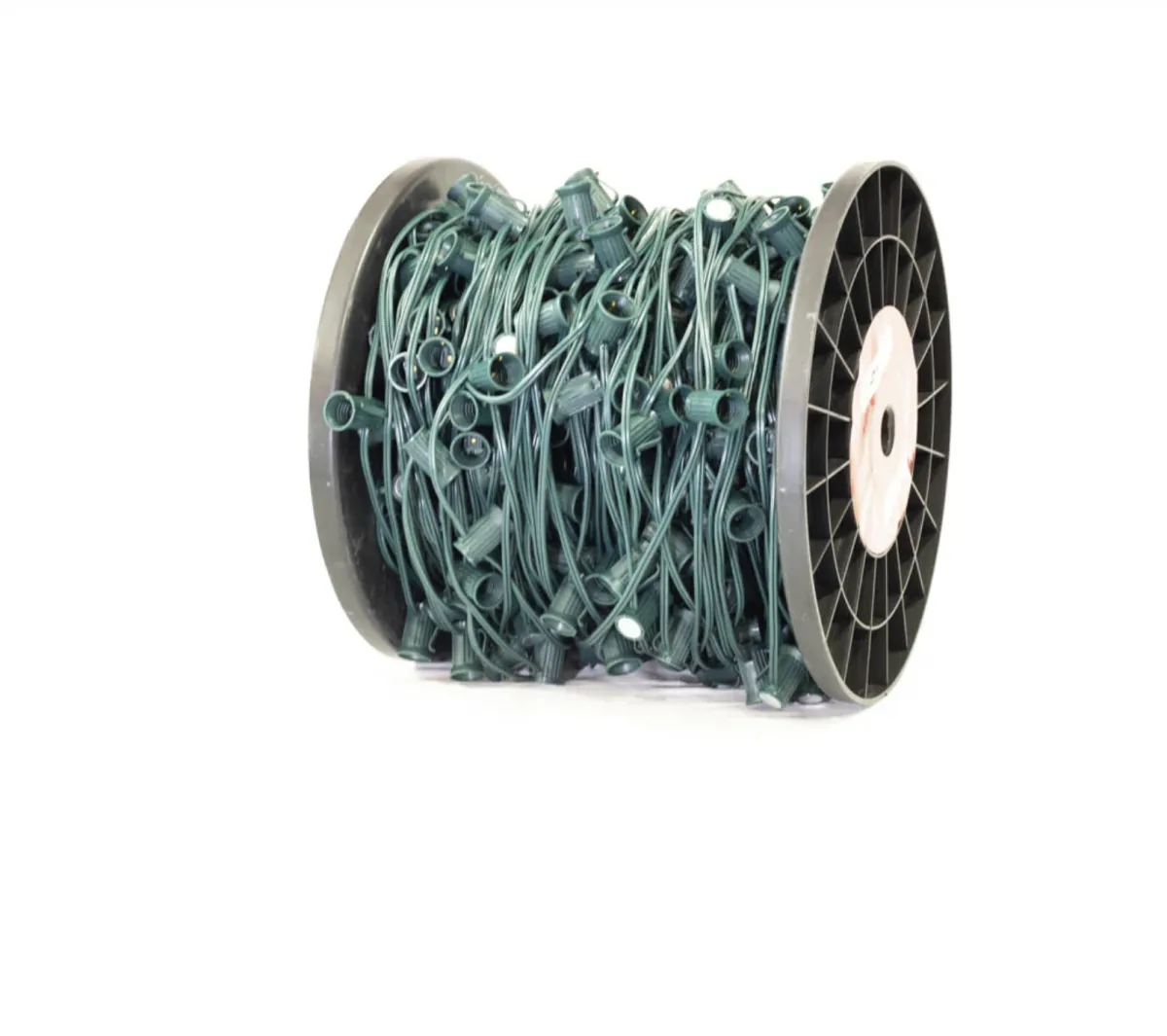Secure your Christmas lights effortlessly with our selection of professional grade clips
Secure Your Shine: Professional-Grade Christmas Light Clips for Every Surface
Click on any category below to jump directly to that section
Sturdy clips designed specifically for larger C9 bulbs. Perfect for rooflines and creating bold, visible displays.
Versatile clips tailored for medium-sized C7 bulbs. Ideal for various applications, from windows to outdoor structures.
Christmas Light Clips: Innovative clips with strong magnets for easy, damage-free installation on metal surfaces like gutters and downspouts.
Specialized clips for secure attachment along roof ridges and peaks, ensuring a perfectly straight light line on difficult angles.
Convenient pre-spaced clip strips for quick and uniform installation of light strings, saving time and effort.
Unique clips designed for specific surfaces or applications, such as brick, stucco, or wrapping lights around columns.
C9 Christmas Light Clips
C7 Christmas Light Clips
Christmas LiteClip & Strips
Streamline your holiday light installation with our commercial-grade LiteClips. Available for both C9 and C7 bulbs, these versatile clips easily secure between the socket and bulb, allowing for downward, upward, or straight-out positioning. For a complete, safe, and secure setup, pair with our LiteClipStrip mounting system. These efficient tools ensure quick and professional-looking installations for homes and businesses alike. Available in White or Brown.
Speciality Christmas Lights Clips
All-Purpose
Clip
The All-in-One Plus clip, favored by professional installers, accommodates C7, C9, C6, mini, and icicle lights, offering versatile horizontal gutter and vertical shingle mounting options, a tight grip for mini lights, layering capabilities for unique designs, and the ability to hang two light strings simultaneously, ensuring a perfect roof display.
Best Shingle
Tab Clip
This durable plastic shingle tab, more robust than standard versions, securely holds both C7 and C9 sockets, easily slides under shingles, and versatilely attaches to gutters, decks, and flat surfaces (when paired with a parapet clip), making it the perfect Christmas light accessory for various installation needs.
Tuff Tab
Clip
The durable Tuff Tabs, designed for C7 or C9 bulbs, feature Flex technology for easy installation over socketed bulbs, 360-degree rotation, outward-facing positioning on shingles or cedar shakes, two living hinges for secure hold, and weather-resistant construction for professional-grade Christmas light displays.
Christmas Light Ridge Clips
C9/C7 Best Enclosed
Ridge Clip
The C9/C7 Best Enclosed Ridge Clip (Patent Pending) is a durable, year-round solution for C7 and C9 socket strands and bulbs, featuring a fully enclosed design that securely holds lights in place without detachment, making it ideal for permanent or long-term installations.
Magnetic Christmas Lights Clips
Magnet Clip for C7/C9
Socket Wire
The Magnetic Clip for C7 or C9 Sockets, designed exclusively for SPT-1 wire (not compatible with LED stringer sets), features a high-strength solid magnet that securely holds lights horizontally or vertically on metal surfaces (excluding aluminum), allowing for quick, reusable installations year after year.
C9 Magnetic Spool
12" Spacing
This versatile lighting solution features heavy-duty, UV-protected 18-gauge SPT-1 wire rated for 840 watts, equipped with rust-resistant nickel-plated C9 magnetic sockets for secure attachment to ferrous metals, 12" spacing, 250' or 500' foot spool, compatible with E17 base incandescent and LED bulbs (sold separately), and suitable for both indoor and outdoor use.
C9 Magnetic Spool
15" Spacing
This versatile lighting solution features heavy-duty, UV-protected 18-gauge SPT-1 wire rated for 840 watts, equipped with rust-resistant nickel-plated C9 magnetic sockets spaced 15" apart on 250' or 500' spools, securely attaching to ferrous metals and compatible with E17 base incandescent and LED bulbs (sold separately) for both indoor and outdoor use.
Why Christmas Light Clips Are a Game-Changer
Transform your holiday decorating experience with professional-grade Christmas light clips. These versatile tools are the secret to creating clean, polished displays that withstand the elements all season long. Designed for various surfaces and bulb sizes, quality clips ensure your lights stay securely in place, avoiding the sloppy appearance and frequent adjustments often associated with cheaper alternatives. Easy to install and remove, these clips are favored by professionals nationwide for their durability and neat finish. By investing in commercial-grade clips, you'll save valuable time during both setup and takedown, allowing you to focus more on enjoying the festive season rather than fussing with your decorations. Make your holiday lighting effortless and impressive with the right clips, and elevate your display to a professional standard with minimal hassle.

Christmas Light Clips
for Damage-Free, Professional Displays
Upgrade your holiday decorating technique by replacing staple guns and nails with versatile Christmas light clips. These innovative tools not only protect your home and lights from damage but also allow for easy adjustments after installation. Available in various designs to suit different surfaces like gutters, shingles, and flat areas, light clips can securely hold multiple bulb sizes, including C7, C9, icicle, and mini lights. By switching to clips, you'll preserve your property's integrity, extend the life of your lights, and gain the flexibility to perfect your holiday illumination with ease. Embrace this simple yet effective solution to elevate your decorating process and achieve professional-looking results without the hassle and potential harm of traditional fastening methods.
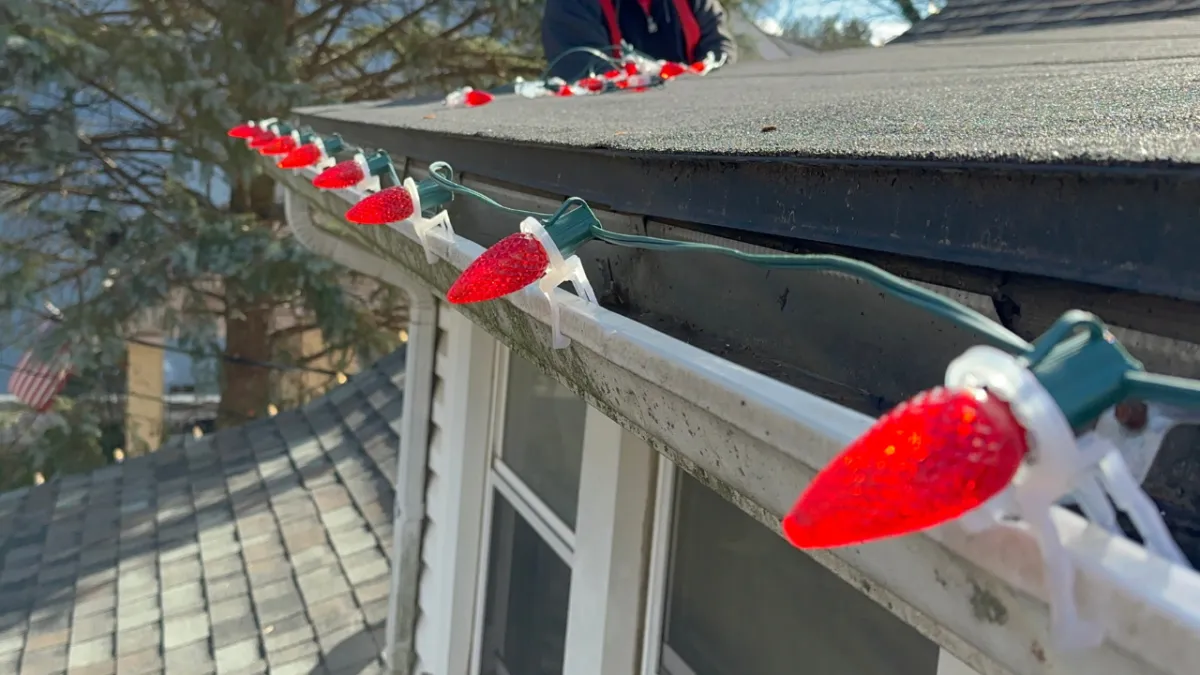


Frequently Asked Questions
How do Christmas light clips compare to traditional methods like staples or nails?
Christmas light clips are superior to staples or nails because they don't damage your home or lights, allow for easy adjustments and removal, and provide a cleaner, more professional look. They also make it easier to reuse your lights year after year without causing additional wear and tear.
Can using Christmas light clips save time during installation and removal?
Yes, using Christmas light clips can significantly reduce setup and takedown time. They're designed for easy installation and removal, allowing you to spend less time on decorating and more time enjoying the holiday season.
How do Christmas light clips improve the longevity of my holiday lights?
By securely holding your lights in place without pinching or damaging the wires, Christmas light clips help extend the life of your holiday lights. They also protect lights from harsh weather conditions, reducing the need for frequent replacements.
How do professional-grade Christmas light clips contribute to a better overall display?
Professional-grade clips ensure your lights stay in place, creating a neat and uniform appearance. They allow for precise positioning and spacing of lights, resulting in a polished, high-quality display that enhances your home's festive appeal.
What surfaces can Christmas light clips be used on?
Christmas light clips are designed for use on various surfaces, including gutters, shingles, and flat areas. There are also specialized clips for different applications, such as ridge clips and all-purpose clips.
How do Christmas light clips benefit holiday decorating?
Christmas light clips offer several benefits: they protect your home and lights from damage, allow for easy adjustments after installation, work on various surfaces, securely hold multiple bulb sizes, and help achieve a professional-looking display without the hassle of traditional fastening methods.
Discover Expert Tips on Our Blog
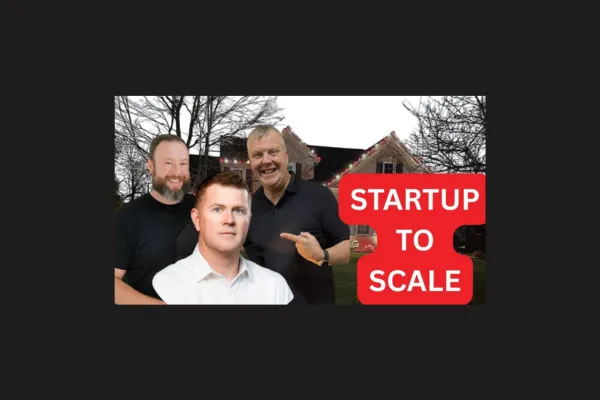
The Mindset Revolution: How Thinking Bigger Transforms Your Service Business
The difference between a struggling service business and a thriving enterprise often comes down to one critical factor: mindset. While most business owners focus obsessively on tactics, tools, and techniques, the most successful entrepreneurs understand that their greatest asset—and biggest limitation—exists between their ears. This comprehensive guide explores how shifting your mindset can transform not just your business results, but your entire approach to entrepreneurship and wealth building.
The Million-Dollar Ceiling: Breaking Through Mental Barriers
Many entrepreneurs unknowingly create their own glass ceilings, and the pattern is remarkably consistent across industries. As one successful business owner reflected, "I always thought, man, if I can get to a million dollars, you know, I've accomplished something. And I think anyone who starts a business, that's probably one of their first goals, right? Is get to that million dollar mark."
This goal becomes deeply embedded in their psyche, often from childhood experiences or societal programming about what constitutes success. The challenge isn't the goal itself—it's what happens when you achieve it. Most business owners who reach seven figures find themselves stuck, unable to grow beyond that milestone because they never programmed their minds for larger possibilities. They've achieved what they believed was the pinnacle of success, leaving them without a clear vision for what comes next.
The root of this limitation often traces back to formative experiences. Consider the story of a successful entrepreneur who recalled a childhood memory that shaped his entire approach to wealth. As a young boy at a parade, he witnessed a business owner pay for meals for fifteen kids. Someone mentioned that the man's company did about a million dollars that year, and that number became permanently etched in his mind as the definition of true business success.
These mental barriers create a compound negative effect throughout your business operations. When you don't believe customers will pay premium prices, you undervalue your services. When you can't envision substantial returns on investment, you hesitate to hire quality team members. When opportunities seem "too big" for your current reality, you miss expansion possibilities entirely. The truth is profound yet simple: "the limitations starts from all these things that you think, um, or the plateau or, or the, the, the bar of success."
The most successful entrepreneurs understand that your business will never outgrow your personal vision for what's possible. They recognize that breaking through requires not just changing strategies, but fundamentally rewiring how they think about success, wealth, and possibility itself.
The Psychology of Scaling: From Operator to Owner
One of the biggest obstacles to scaling any service business is the founder's inability to delegate effectively. This stems from a deep-seated belief that they're the only person capable of doing things correctly. While this mindset might serve you in the early stages when attention to detail and quality control are paramount, it becomes the primary limitation preventing growth.
A successful business owner who struggled with this challenge explained his realization: "I'm a problem solver. I solve things very quickly in my mind. So of course, when I see a issue or a problem within my organization, the first instinct I have is like, Hey, here's the solution. You know, that's great, right? It's good that I have solutions and I've solved it. The problem is now everyone's depending on Paul to solve the problems."

This pattern creates a dangerous dependency cycle where team members stop thinking critically and simply wait for leadership to provide answers. The business owner becomes a bottleneck, limiting growth to their personal capacity to solve problems and make decisions. Breaking this cycle requires a fundamental shift in approach, moving from providing solutions to developing problem-solving capabilities in others.
One effective method involves requiring team members to present three potential solutions whenever they bring a problem forward. This approach develops critical thinking skills, builds confidence in decision-making, and gradually reduces dependency on leadership for routine issues. The goal isn't to abdicate responsibility entirely, but to create systems and capabilities that function effectively without constant intervention.
True business scaling requires teaching your team to solve problems independently. As the same entrepreneur discovered, overcoming this challenge required discipline and systematic change. He learned to literally write down reminders to "allow your employees to solve the problems" and placed these notes where he could see them regularly. The repetition helped break the ingrained habit of jumping in with immediate solutions.
The transformation from operator to owner represents one of the most challenging transitions in business growth. It requires letting go of the illusion of control while building systems and people capable of maintaining standards and driving results independently.
The Full-Time Entrepreneurship Transition
Making the leap from employee to full-time entrepreneur involves both financial and psychological preparation. The transition requires more than simply replacing your current income—it demands preparation for the irregular cash flow patterns typical of service businesses and the mental adjustment to life without the security of regular paychecks.
One entrepreneur who successfully made this transition emphasized the importance of financial preparation: "Make sure you have your financial house in order. Make sure you're able to live by a budget, because it's not gonna be getting a paycheck every two weeks or every month or every week. We've gone numerous times while we're waiting on commercial clients to pay without taking a paycheck for a month or two. And then you get a windfall of cash."
The financial preparation extends beyond simply having money in the bank. It requires developing comfort with uncertainty and variable income patterns. Successful entrepreneurs learn to budget conservatively during high-income periods and maintain operations during leaner times. They understand that cash flow in service businesses often follows feast-or-famine cycles, and they prepare accordingly.
The psychological challenges often prove more difficult than the financial aspects. You're exchanging the security of regular paychecks for the uncertainty—and unlimited potential—of business ownership. This transition involves managing income variability, taking full responsibility for all business decisions, handling the isolation that often comes with leadership, dealing with the pressure of others depending on your success, and making the fundamental identity shift from implementer to leader.
Many people struggle with what one entrepreneur termed "golden handcuffs"—the comfort and security of a good job that makes the entrepreneurial leap seem unnecessarily risky. This comfort can be particularly challenging for those coming from high-paying professions with excellent benefits. However, those who successfully make the transition often discover that the freedom and potential of entrepreneurship far outweigh the security of employment.
The key to successful transition lies in planning and preparation. This includes building financial reserves, developing systems that can operate without constant oversight, creating multiple revenue streams within the business, and mentally preparing for the challenges and opportunities that come with full ownership and responsibility.
Investment in Self-Improvement: The Highest ROI Activity
Many service business owners invest heavily in equipment and marketing while neglecting the most important asset: themselves. Self-improvement through books, courses, mentorship, and networking often produces the highest returns of any business investment, yet it's frequently overlooked or underfunded.
The principle behind this investment was clearly articulated by one successful entrepreneur: "most good habits and most success habits are caught not taught." This insight reveals why surrounding yourself with successful people and investing in quality education produces such dramatic results. You absorb mindsets, approaches, and habits through exposure and relationship rather than just through formal instruction.
The compound returns of continuous learning extend far beyond specific skills or knowledge. When you commit to daily learning and immediate application of new concepts, you develop pattern recognition that helps you spot opportunities others miss. You build confidence in your ability to acquire new capabilities quickly, which makes you more willing to take on challenges that stretch your current abilities.
One entrepreneur shared his approach to maximizing learning from events and conferences: "I started focusing more on the people at the event, not the event, you know? And what I found is most of the time I was learning the majority of the things that I was applying in the field, that were making a difference in my life from the people that I was dining with that evening, or that I was hanging out with at the event."
This perspective shift—from consuming content to building relationships—transforms educational investments from expense items to relationship-building opportunities. The most valuable insights often emerge from informal conversations with people facing similar challenges or operating at levels you aspire to reach.
The network effect multiplier explains why investing in quality events and educational opportunities produces returns far beyond the immediate learning. Your network truly does determine your net worth, but not in the superficial way most people think. It's about surrounding yourself with people who think bigger than you currently do, who challenge your assumptions, and who model what's possible.
Building a growth-oriented network requires providing value first, maintaining genuine interest in others' success, being vulnerable enough to share struggles and ask for advice, and consistently following up to nurture relationships over time. The most transformative business insights often come from these cultivated relationships rather than formal training sessions.
Redefining Wealth and Success
As your business grows, your definition of wealth should evolve beyond personal consumption. The most fulfilled entrepreneurs develop a vision for wealth that extends beyond themselves to include family, community, and causes they care about. This broader perspective provides motivation for continued growth long after personal needs are met.
One entrepreneur articulated this evolution beautifully when discussing his expanded vision for success: "if the super car didn't cost you anything, and I just gave it to you, would you take it? I'm like, well, I mean, sure, of course I would take it. He goes, so then it really just comes down to price, right? You don't want it because it comes down. I'm like, well, no, it doesn't. It's just, it would be if you gave it to me, I would think it was nice. I go, really? It's not in my, you know, you gimme a thousand acres. Now we're talking."
This conversation revealed something profound about motivation and vision. When pressed about what he would do with unlimited resources, he began articulating goals around impact, legacy, and the ability to support causes he believed in. The conversation shifted from personal consumption to generational impact, community influence, and the ability to make meaningful differences in areas he cared about.
The billion-dollar mindset isn't about greed—it's about impact and influence. When you think at this level, several fundamental shifts occur in how you approach business decisions, resource allocation, and opportunity recognition. You make different decisions about time and money when you're building for massive impact rather than just personal comfort. You notice possibilities that others miss because you're scanning for larger-scale opportunities. You attract higher-caliber people to your organization because your vision inspires others who share similar ambitions.
This expanded wealth perspective includes building resources that benefit children and grandchildren, using success to improve your local community, elevating standards and practices in your industry, supporting causes aligned with your values, and teaching others to achieve similar success. When your vision extends beyond personal accumulation to encompass broader impact, you tap into motivation sources that sustain effort through difficult periods and provide meaning beyond financial metrics.
Practical Implementation Strategies
Sustainable business growth requires systematic approaches to every aspect of your operation. Most service businesses operate reactively, solving problems as they arise rather than preventing them through proper systems. The entrepreneurs who achieve consistent growth understand that systems create the foundation for scalability.
Creating effective systems begins with documenting current processes, even when they seem simple or obvious. Many business owners resist this step because they believe their operations are too straightforward to require formal documentation. However, systematic approaches to customer acquisition, service delivery, quality control, financial management, and employee development become essential as businesses grow beyond the founder's personal capacity to oversee every detail.
The implementation imperative represents the gap between knowledge and results. Many business owners attend training, read books, and consume content without ever applying what they learn. Success requires immediate action on new insights combined with systematic tracking of results and continuous refinement based on feedback.
One successful entrepreneur emphasized this point: "don't ever look at failure as failure. You know, look at it as, you know, an opportunity again to pull yourself out of it. The Think and Grow Rich, I always, I always say I'm gonna write my own book and it's gonna be think, take action and Grow Rich. The fact is, we, we often don't take action because we presuppose negativity or failure."
This insight reveals why implementation proves so challenging for many business owners. Fear of failure prevents action, which guarantees the very outcome they're trying to avoid. Successful entrepreneurs reframe failure as feedback, treating setbacks as information rather than judgments about their capabilities or potential.
Effective implementation requires using new concepts within forty-eight hours of learning them, testing ideas on a small scale before full implementation, measuring results and adjusting approaches based on data, working with accountability partners who challenge you to follow through, and systematically reviewing what's working and what needs adjustment.
Building the Right Team
As your business grows, your success becomes increasingly dependent on the quality of people you attract and retain. This often requires a fundamental shift in how you think about labor costs versus talent investment. The most successful entrepreneurs understand that paying above-market rates for exceptional people creates returns that far exceed the additional investment.
Strategic hiring involves more than just finding people who can perform specific tasks. It requires identifying individuals who share your values and work ethic, who have the potential to grow with your expanding business, who bring complementary strengths that offset your limitations, and who demonstrate the capability to eventually lead others.
Creating a self-managing organization represents the ultimate goal of team building. This requires developing systems, culture, and leadership capabilities throughout the organization rather than concentrating all decision-making authority at the top. When done effectively, it creates an organization that can operate and grow without the founder's constant presence.
The investment in high-quality people often requires overcoming short-term thinking about costs versus long-term thinking about value creation. Exceptional employees don't just perform tasks—they solve problems, identify opportunities, improve systems, and contribute to culture in ways that compound over time.
The Long-Term Vision
Building for impact rather than just profit creates the foundation for businesses that generate value far beyond their immediate transactions. Whether through employee development, community improvement, or industry advancement, successful entrepreneurs find ways to make lasting positive impacts that extend well beyond their personal involvement.
Eventually, every business owner faces transitions—whether selling the business, passing it to family members, or pivoting to new opportunities. Building with the end in mind ensures your business creates lasting value rather than just personal income. This perspective influences every major decision, from systems development to team building to strategic planning.
The entrepreneurs who achieve extraordinary results aren't necessarily smarter or more talented than others—they simply refuse to accept limitations that others take for granted. They invest consistently in themselves, surround themselves with the right people, and maintain focus on possibilities rather than problems.
Conclusion: The Transformation Begins Now
Your business will never outgrow your personal development. The question isn't whether you have the potential for dramatic growth—it's whether you're willing to expand your thinking to match that potential. The transformation begins with a single decision to stop accepting limitations and start building the business and life you truly want.
Everything else is just implementation. But implementation guided by unlimited thinking, supported by continuous learning, and executed with the help of exceptional people creates possibilities that most entrepreneurs never even consider. The choice is yours: accept the limitations that others take for granted, or join the small group of entrepreneurs who refuse to think small and consistently achieve what others consider impossible.

Q1: I've hit a million dollars in revenue but feel stuck. Why can't I seem to grow beyond this point?
A: You've likely hit what's called the "million-dollar ceiling" - a self-imposed mental barrier that many entrepreneurs face. As one successful business owner explained, "I always thought, man, if I can get to a million dollars, you know, I've accomplished something. And I think anyone who starts a business, that's probably one of their first goals, right?" The problem occurs when you achieve what your mind considers the pinnacle of success, leaving you without a clear vision for what comes next. Break through this by expanding your vision beyond personal goals to include generational impact, community influence, and causes you care about. Start thinking in terms of what you could accomplish with 10x or even 100x your current resources.
Q2: I solve every problem in my business personally, and my team always comes to me for answers. How do I break this cycle?
A: This is a classic control trap that prevents scaling. The issue, as one entrepreneur discovered, is that "when I see a issue or a problem within my organization, the first instinct I have is like, Hey, here's the solution... The problem is now everyone's depending on [me] to solve the problems." Implement the "three solutions method": when employees bring you problems, require them to present three potential solutions along with their recommendation. Initially, you may need to write yourself reminders to "allow your employees to solve the problems" and resist the urge to immediately provide answers. This develops their critical thinking while reducing your involvement in routine decisions.
Q3: I have a well-paying job with benefits, but I want to go full-time with my business. How do I make this transition safely?
A: The transition requires both financial and psychological preparation. Start by getting your "financial house in order" and learning to "live by a budget, because it's not gonna be getting a paycheck every two weeks." Successful entrepreneurs recommend having 6-12 months of expenses saved, since you'll experience periods where you "go numerous times while waiting on commercial clients to pay without taking a paycheck for a month or two." Beyond finances, prepare mentally for income variability, increased responsibility, and the pressure that comes with others depending on your success. The "golden handcuffs" of a secure job are real, but those who make the leap often discover the freedom and unlimited potential far outweigh the security of employment.
Q4: Is investing in courses, coaching, and conferences really worth the money? How do I know I'll get a return?
A: Self-improvement typically produces the highest returns of any business investment. As one successful entrepreneur noted, "most good habits and most success habits are caught not taught." The value often comes less from the content and more from the relationships you build. Focus on "the people at the event, not the event" because "most of the time I was learning the majority of the things that I was applying in the field... from the people that I was dining with that evening." Even when the training itself isn't exceptional, the networking and relationship-building opportunities typically return the investment many times over. Surround yourself with people operating at the level you want to reach.
Q5: I'm hesitant to hire expensive employees. How do I justify paying someone $100,000+ per year?
A: This hesitation often stems from limiting beliefs about what's possible in your business. The key insight is that exceptional employees don't just perform tasks—they solve problems, identify opportunities, improve systems, and contribute to culture in ways that compound over time. When you hire someone who can eliminate bottlenecks, increase efficiency, and free you to focus on high-value activities, the return far exceeds the investment. Consider that if a $100,000 employee helps you capture opportunities worth $500,000 or more, the math becomes obvious. Shift your thinking from "labor cost" to "talent investment" and focus on the value exceptional people create rather than just what they cost.
Q6: I've failed multiple times in business. How do I maintain motivation and not let setbacks derail my progress?
A: Reframe your relationship with failure entirely. As one entrepreneur emphasized, "don't ever look at failure as failure. You know, look at it as an opportunity again to pull yourself out of it." The reality is that "we often don't take action because we presuppose negativity or failure," which guarantees the very outcome you're trying to avoid. Successful entrepreneurs treat setbacks as feedback rather than judgments about their capabilities. When failures occur, immediately ask: "What can I learn from this? How can this experience contribute positively to my future success?" Extract specific lessons, recover quickly, adjust your strategy, and use the experience to build resilience and confidence in your ability to overcome challenges.
Q7: Why should I think about making billions when I'm struggling to reach my first million?
A: Expanding your vision isn't about greed—it's about impact and possibility. When asked what he would do with unlimited resources like Elon Musk, one entrepreneur began articulating goals around supporting causes he believed in and making generational impact. The billion-dollar mindset changes how you make decisions about time, money, and opportunities. You start noticing possibilities others miss, attracting higher-caliber people who share ambitious visions, and building for long-term impact rather than short-term comfort. Even if you never reach billions, thinking at that level eliminates artificial limitations and opens up possibilities you never would have considered with smaller thinking.
Q8: I read business books and attend training, but I struggle to implement what I learn. How do I bridge this gap?
A: The gap between knowledge and results is implementation, and most people consume information without applying it. Develop a systematic approach: use new concepts within 48 hours of learning them, test ideas on a small scale before full implementation, measure results and adjust based on data, work with accountability partners who challenge you to follow through, and regularly review what's working versus what needs adjustment. Remember that "think, take action and grow rich" is more accurate than just thinking about growing rich. Implementation requires overcoming the tendency to "presuppose negativity or failure" and taking action despite uncertainty about outcomes.
Q9: My business operates reactively, solving problems as they arise. How do I create systems that allow for real growth?
A: Sustainable growth requires systematic approaches to every aspect of your operation. Start by documenting your current processes, even when they seem simple or obvious. Develop systems for customer acquisition (predictable methods for generating qualified leads), service delivery (standardized processes ensuring consistent quality), quality control (mechanisms for maintaining standards as you scale), financial management (tracking profitability and cash flow), and employee development (structured approaches to training and advancement). Most service businesses resist systematization because they believe their operations are too straightforward, but systems become essential as you grow beyond your personal capacity to oversee every detail.
Q10: How do I build a business that creates lasting impact beyond just making money?
A: Start by expanding your definition of wealth beyond personal consumption to include generational impact, community influence, industry leadership, philanthropic goals, and knowledge transfer. This broader perspective provides motivation for continued growth long after personal needs are met. Build your business with the end in mind, considering how it will create lasting value whether you sell it, pass it to family, or transition to new opportunities. Focus on developing people, improving your community, elevating industry standards, and teaching others to achieve similar success. When your vision extends beyond personal accumulation to encompass broader impact, you tap into motivation sources that sustain effort through difficult periods and provide meaning beyond financial metrics.
Copyright ©2025 All Right Reserved website designed by christmaslights.io
Terms of Service / Privacy Policy
Have questions or need assistance?
Contact us at (855)619-LITE


